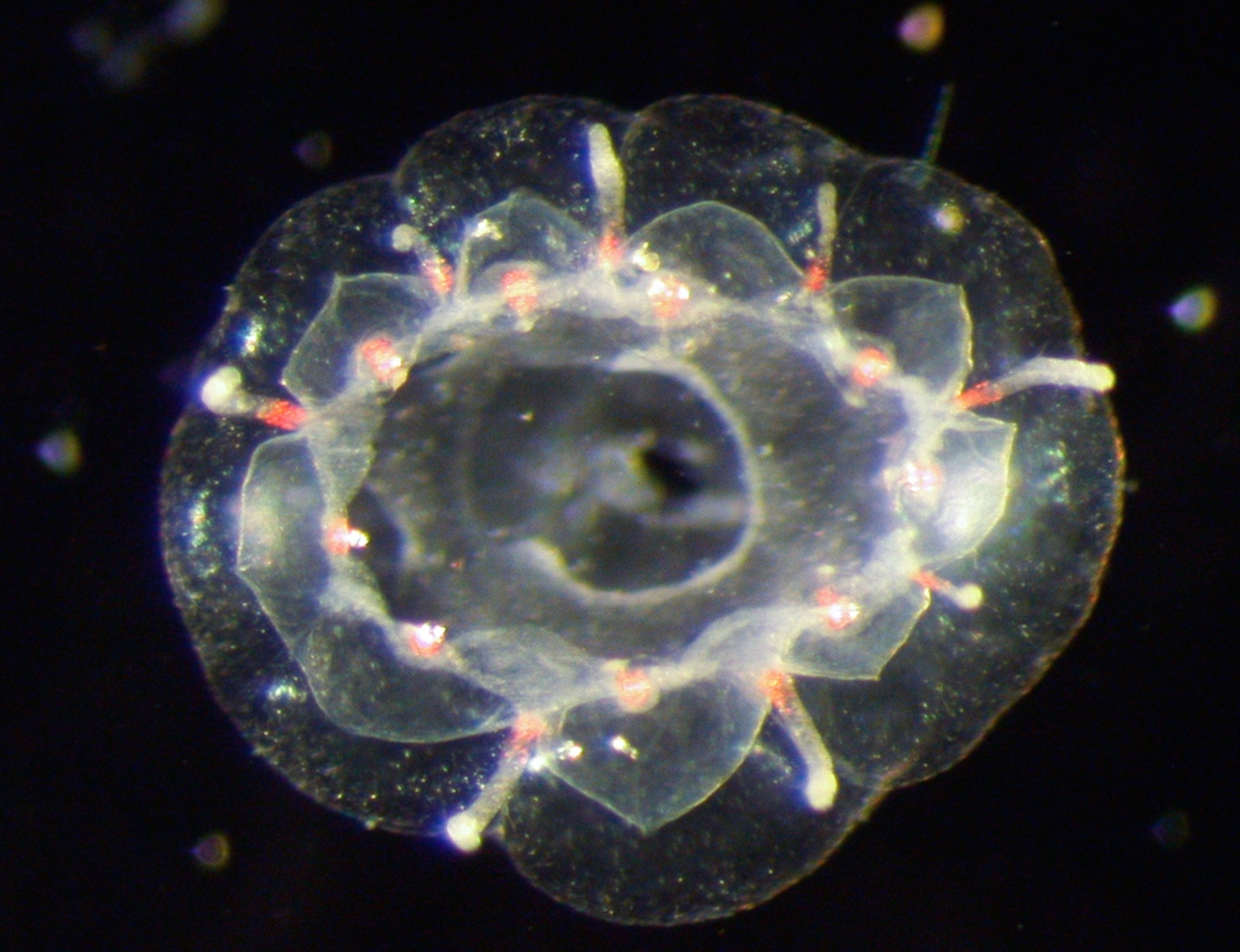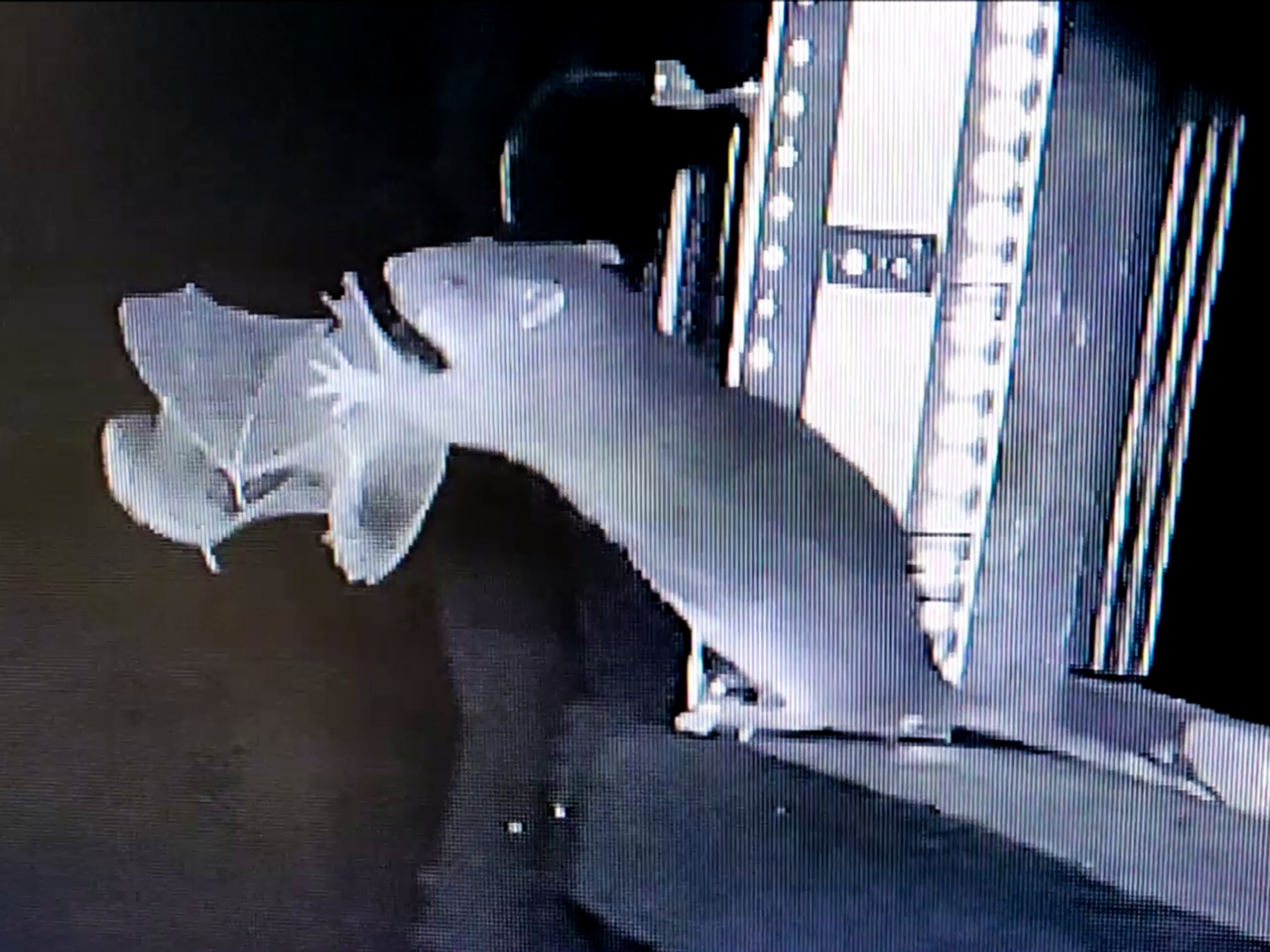
"City of Gonads" Jellyfish Discovered
The new species, C. medeopolis, keeps the family jewels on display.
Sporting a reproductive "skyline," a new species of jellyfish is like nothing else known under the sea, a new study says.
Shaped like flying saucers, both males and females of the new jellyfish have gonads on the outsides of their bodies, unlike any of the approximately 3,000 other jellyfish species known to science.
Gonads are the reproductive glands that produce sperm in males and eggs in females.
Arranged in a "crater" at the center of the jellyfish's top side, the gonads, upon close inspection, resemble "skyscrapers in a downtown business district," said Lisa-Ann Gershwin, curator of zoology at the Queen Victoria Museum and Art Gallery in Launceston, Australia.
Accordingly, Gershwin gave the jellyfish the species name "medeopolis," Latin for "city of gonads."
"It's just so completely different from anything we've ever seen before," Gershwin said—in fact, the jellyfish has forced the creation of a whole new family and genus, Csiromedusidae and Csiromedusa, respectively.
Both names honor the Australian government's Commonwealth Scientific and Industrial Research Organization (CSIRO), which assisted the scientists with their research.
(Related: "New Jellyfish Species Found.")
"City of Gonads" Stumps Scientist
Gershwin and colleagues discovered the city-of-gonads jellyfish eight years ago in a part-seawater river in the city of Hobart (map) on the Australian island of Tasmania. It took until now, though, for the scientists to verify that Csiromedusa medeopolis represents a new family.
(Also see "Blue Jellyfish Invade Australia Beaches.")
Harmless to humans, the new jellyfish species measures just 1.5 to 2 millimeters (0.06 to 0.08 inch) across—"not the smallest ever known, but it would be pretty close," Gershwin said.
About 90 percent of jellyfish species are smaller than an inch (2.5 centimeters), but fewer than 0.5 percent of jellyfish are measured in millimeters.
Making the Csiromedusa medeopolis discovery was "like a day at Disneyland for a scientist," said Gershwin, who's named more than 160 new jellyfish species, including a "rainbow glow" jelly (picture).
Despite all that experience, she's at a loss to explain what good external gonads would be for a jellyfish.
"I've thought about this for so long—I have no idea," Gershwin said. "There may be some functional reason, but I can't see what it is."
The city-of-gonads jellyfish study is published online this week in the journal Zootaxa.
More Jellyfish Coverage





